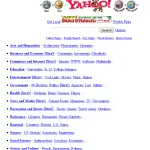Chapter 2 • The History of content marketing
Welcome to Chapter 2 of “The Outfitters Guide to Content Marketing.” In Chapter 1, we learned that marketing with love and authenticity can transform how businesses connect with their audience. Now, let’s delve into the history of content marketing and how it has evolved to become a cornerstone of modern digital communication.
Defining Inbound and Content Marketing
Inbound marketing is a strategy focused on attracting customers by creating valuable content and experiences tailored to them.
Unlike outbound marketing, which interrupts your audience with content they don’t always want, inbound marketing forms connections they are looking for and solves problems they already have.
Content marketing, a key component of inbound marketing, involves creating and sharing valuable content to attract and retain a clearly defined audience. This approach helps establish trust, foster engagement, and ultimately drive profitable customer actions.
1732
Poor Richard’s Almanack by Benjamin Franklin:
One of the earliest examples of content marketing, Benjamin Franklin’s “Poor Richard’s Almanack,” provided valuable information to readers while promoting Franklin’s printing business. This almanac is a testament to the timeless principle that providing useful content can indirectly boost business.


1888
Johnson & Johnson’s Modern Methods of Antiseptic Wound Treatment
Johnson & Johnson published a guide offering crucial medical information, positioning the company as a leader in the medical field. This guide not only educated the public but also established Johnson & Johnson as a trusted authority.
1895
John Deere launched “The Furrow,” a magazine providing farmers with insightful information on farming techniques. This initiative created a loyal customer base and demonstrated how educational content can build strong relationships with an audience.


1900
Michelin produced the Michelin Guide to encourage driving and, consequently, tire sales. By offering restaurant and travel information, Michelin created a valuable resource for drivers, reinforcing the connection between their product and travel.
1904
Jell-O’s distribution of free recipe books to housewives significantly boosted sales by providing practical uses for their product. This strategy turned a simple gelatin dessert into a household staple.


1930 - 1950
Sponsored by soap companies, Soap Operas engaged housewives during the day with entertaining stories. This blend of entertainment and advertising is an early example of content marketing’s ability to captivate and influence an audience.
1955
The Guinness Book of World Records
Created by Guinness, the Guinness Book of World Records was initially conceived to settle pub arguments. Over time, it evolved into a powerful marketing tool, showcasing the brand’s commitment to excellence and record-setting achievements. This iconic book has since become synonymous with record-breaking feats and remains a testament to Guinness’s innovative marketing approach.


1980 - 1990
Infomercials
Infomercials provided detailed information about products through long-format TV commercials. This combination of entertainment and persuasive advertising marked a significant evolution in content marketing.
1990
Custom Publishing
Brands began creating their own magazines and newsletters, offering valuable content to their customers. This era saw the rise of custom publishing as a means to build brand loyalty and provide ongoing value to audiences.


1990
Websites and Blogs
With the advent of the internet, brands established online presences through websites and blogs. Early adopters used these platforms to build direct relationships with consumers, sharing valuable content and insights.
2000
Social media platforms like Facebook, Twitter, and YouTube revolutionized content distribution and engagement. Brands leveraged these channels to share content, interact with audiences, and build communities.


2010
Content Hubs and Digital Magazines
Companies like Red Bull created extensive content platforms, effectively becoming media companies. These hubs offered diverse content formats, including articles, videos, and interactive experiences, engaging audiences on multiple levels.
2010 - Present
Brands began leveraging influencers with large followings to extend their reach and credibility. Influencers became trusted voices, helping brands connect with niche audiences in authentic ways.


2020
Advanced technologies like AI have enabled highly personalized content experiences, enhancing user engagement and conversion rates. Personalization ensures that content resonates deeply with individual audience members.
Analysis of the Internet's Role:
Accessibility and Reach • The internet democratized content creation and distribution, enabling brands to reach global audiences without relying on traditional media channels.
Engagement and Interaction • Social media platforms facilitated two-way communication, allowing brands to engage directly with consumers and gather real-time feedback.
Data-Driven Strategies • Analytics tools provided insights into consumer behavior, enabling brands to optimize their content strategies for better engagement and effectiveness.
Evolution of Formats • The internet supported diverse content formats, including blogs, videos, podcasts, and interactive content, catering to various consumer preferences.
Search Engine Optimization (SEO) • SEO became crucial for content discoverability, driving organic traffic through search engines like Google.
Content Management Systems (CMS) • Tools like WordPress and HubSpot streamlined content creation, management, and distribution processes, making it easier for brands to maintain a consistent online presence.
Wrapping Things Up
The story of content marketing demonstrates its continuous adaptation to technological advancements and changing consumer behaviors. From print publications to sophisticated digital strategies, content marketing has evolved to provide value and foster engagement in increasingly innovative ways. The internet has been a pivotal force in this transformation, enabling brands to create, distribute, and measure content more effectively.
By understanding the history of content marketing, businesses can appreciate the enduring principles that make it successful. As we move forward, embracing these principles will help us create meaningful connections with our audiences and achieve long-term success.
So, are you ready to rewrite your brand’s narrative with us? Let’s embark on this journey together, charting new territories, blazing trails, and outfitting your brand for unparalleled success in the digital wilderness.
Join our outfitters, lets blaze a trail and explore your legendary brand potential


